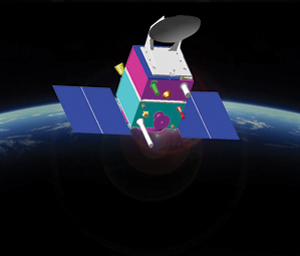INDIAN ARMED FORCES CHIEFS ON OUR RELENTLESS AND FOCUSED PUBLISHING EFFORTS

The insightful articles, inspiring narrations and analytical perspectives presented by the Editorial Team, establish an alluring connect with the reader. My compliments and best wishes to SP Guide Publications.

"Over the past 60 years, the growth of SP Guide Publications has mirrored the rising stature of Indian Navy. Its well-researched and informative magazines on Defence and Aerospace sector have served to shape an educated opinion of our military personnel, policy makers and the public alike. I wish SP's Publication team continued success, fair winds and following seas in all future endeavour!"

Since, its inception in 1964, SP Guide Publications has consistently demonstrated commitment to high-quality journalism in the aerospace and defence sectors, earning a well-deserved reputation as Asia's largest media house in this domain. I wish SP Guide Publications continued success in its pursuit of excellence.
- Indian Air Force Aims for Full Indigenous Inventory by 2047 — Air Chief Marshal A.P. Singh
- General Upendra Dwivedi takes over as the Chief of the Army Staff
- Rajnath Singh assumes charge as Defence Minister for the second consecutive term
- Admiral Dinesh K. Tripathi assumes Command of the Indian Navy as 26th Chief of the Naval Staff
- Prime Minister witnesses 'Bharat Shakti' – a Tri-Services Firing and Manoeuvre Exercise in Pokhran, Rajasthan
India's space programme: Makes us proud

India’s space programme took off in right earnest with the setting up of the Indian Space Research Organisation (ISRO) in 1969. It is one institution that all Indians are really proud of. In 1975, ISRO launched India’s first satellite Aryabhata, aboard a Soviet rocket and India’s space programme came of age when ‘Rohini’ satellite was put into orbit using the first Indian Satellite Launch Vehicle (SLV-3) in 1980. The later variants of launch vehicles, Augmented Satellite Launch Vehicle (ASLV), Polar Satellite Launch Vehicle (PSLV) and Geosynchronous Satellite Launch Vehicle (GSLV) have put into orbit a large number of communication and earth observation satellites. With Rs. 5,600 crore budget for 2013-14, it is among the six biggest space programmes in the world; others being USA, Russia, China, European Space Agency (ESA) and Japan.
The initial satellites were for technology assimilation. Aryabhata gave India the experience to build and operate a satellite while the Bhaskara series were for remote sensing. The Rohini series helped develop satellite launcher SLV-3 and subsequently the ASLV. The first experimental communication satellite was launched on ESA Ariane-1 rocket.
The INSAT (Indian National Satellite) series, the biggest satellite programme in the Asia-Pacific region, was essentially a joint venture between the Department of Telecommunication, Department of Space, India Meteorological Department (IMD), Doordarshan, and All India Radio. INSAT-1A was launched on April 1982 for multi-purpose communications and meteorology. INSAT-1B, C&D followed. The first operational remote sensing satellite was IRS-1A put into orbit in March 1988.
The Satish Dhawan Space Centre at Sriharikota, off the coast line in Andhra Pradesh, is a multi-pad main launch site. The Vikram Sarabhai Space Centre in Trivandrum is the main development centre for rockets and it develops satellites and receives, processes, archives and distributes payload data in real time. The Master Control Facility at Hassan controls the satellites and tracks and monitors long distances, even beyond the moon.
Serious Business
INSAT-2 series were the second generation long life satellites launched from 1992 onwards and most of them are still operational. The first PSLV-D1 in September 1993 could not put the IRS-1E satellite into orbit. In October 1994, the PSLV-D2 was successfully launched. The IRS-P4 carried an ocean colour monitor (OCM) and a multi-frequency scanning microwave radiometer (MSMR). INSAT-3B was a multi-purpose satellite for mobile communications. GSAT-1 was the experimental satellite to test first GSLV-D1 in April 2001. Technology Experiment Satellite (TES) launched on a PSLV in October 2001 was to test orbital control systems. India’s first exclusive educational satellite, EDUSAT was the first operational payload of GSLV in October 2004. INSAT-4A in December 2005 was the advanced satellite for direct-to-home television broadcasting services that changed the way of life in middle-class homes. CARTOSAT series from May 2005 provided higher resolution sub 2.5-metre imagery. Space capsule Recovery Experiment (SRE-1) was launched aboard a PSLV in January 2007.
In October 2008, ISRO launched its ambitious unmanned lunar probe Chandrayaan-1 with scientific instruments from many countries. RISAT-2, a Radar imaging satellite, acquired from Israel for $110 million, for monitoring India’s borders against infiltration was launched in April 2009. The RISAT-1 launched in April 2012 was the first indigenous all-weather Radar Imaging Satellite to support agriculture and disaster management. GSAT-10 advanced communication satellite was launched aboard Ariane-5VA-209 rocket. SARAL, the latest satellite launched on February 25, 2013 is a joint Indo-French mission for oceanographic studies. GSLV Mark-III is now under development and is expected to become operational in 2013, thus reducing dependence on foreign rockets.
India’s economic progress has accelerated the space programme; conversely the satellites have greatly supported the economy due to better communications and imaging.
For some years now, India has been offering space launches to other countries. Recently India became the first country to launch 10 satellites from a single rocket. ISRO has now proposed Rs. 12,400 crore, 14-year programme for a manned space flight. Also a large number of futuristic satellites are at different stages from drawing board to manufacture. The nation is eagerly looking forward to the operationalisation of GPS Aided Geo Augmented Navigation (GAGAN) and the Indian Regional Navigational Satellite System (IRNSS)-1.
The founding father of India’s space programme Vikram Sarabhai had said, “We are convinced that if we are to play a meaningful role nationally, and in the comity of nations, we must be second to none in the application of advanced technologies to the real problems of man and society.” How true he was. “The successful flight test of long-range Agni-V missile in April 2012 has also opened a new era of opportunity of building anti-satellite weapons,” said Dr V.K. Saraswat, head of India’s Defence Research and Development Organisation (DRDO).





